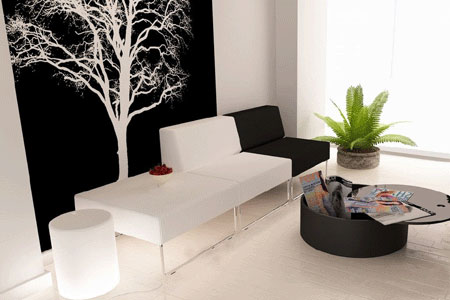
Home staging with plants is one of my personal favorite budget-friendly strategies for enhancing the décor of any interior or exterior space. Plants offer a natural touch to any décor, enhancing appeal to any prospective buyer. Plants can be used to improve the aesthetics of any type of residence, as well as being equally effective when utilized during commercial property staging.
Using plants as part of a staging design does take some special considerations and is not fool-proof. However, when expertly executed, the use of house plants is one of the very best ways to maximize value in any staging design.
This guide helps expert real estate stagers and do-it-yourselfers to better understand how to achieve perfect results from home staging by using house plants in the design scheme.
Benefits of Home Staging with Plants
House plants are cheap. They can take up large spaces and will provide more aesthetic impact than virtually any other low-cost addition. Plants constitute a form of natural art. Plants can also be expertly tailored to act as a screen or room divider, to cover unaesthetic marks on a floor surface or to control traffic flow within the floorplan.
Plants foster an atmosphere of nurturing and caring. Statistics clearly show that people respond favorably to house plants in interior design applications. The display of house plants also demonstrates the availability of a large amount of natural light in the home. Natural light is most often considered a serious selling feature.
Plants can be used inside or outside to improve the look and feel of any space. Depending on the type of plant utilized, every space in the home can benefit from a little touch of Mother Nature.
Drawbacks of Designing with Plants
Not every aspect of utilizing plants in staging designs is universally positive. Using any living materials in a staging design does have some negative connotations for some stagers and clients.
Plants require maintenance. Plants will not improve any décor if they are sick, under-watered, over-watered or overgrown.
Plants can attract pests, including insects and other creatures, such as mice, frogs and house pets. Having anything eating or living in your plants is a potential disaster waiting to happen.
Plants can certainly be overused in staging applications. Plants should accentuate the décor, not overwhelm it.
Plants can damage surfaces, create odd odors in the home and even cause tripping hazards for prospective buyers.
Expert Advice on Home Staging with Plants
I love to use natural materials and plants in my own staging designs. I discovered just how effective plants can be when I used them to help sell several of my own properties. After this, I began integrating plants into virtually all of my professional designs. Here are some helpful tips, based on the success of using plants in hundreds of staged home and apartments:
Plants work great as part of a vignette, when paired with art, accessories and a small piece of furniture.
Buy plants at large home stores, like Home Depot, Walmart or Lowes. They will be far less expensive than in garden centers or specialty stores.
Be sure to buy low maintenance plants that will easily acclimate to their new home. High maintenance plants become a burden on the stager and the client alike.
Be careful not to use plants that may be poisonous to pets or children. Also, be cautious of using cactus, since the sharp spikes can cause injury and might even lead to personal injury litigation for the stager or the homeowner.
House plants require some amount of light and water. Keep this in mind when locating them in any environment.
Plants can work just as well to enhance outdoor areas of the home. Plants can be used on decks, terraces and patios for design elements that combine outdoor appeal with useable space.
Do not allow large plant collections in the staging design. A few specimens are beautiful, but a literal forest can become a huge deterrent to the sales process.
In summary, consider using plants for design accents in many areas of the home that need a “little something”, but do not require an investment in costly furniture or art.




